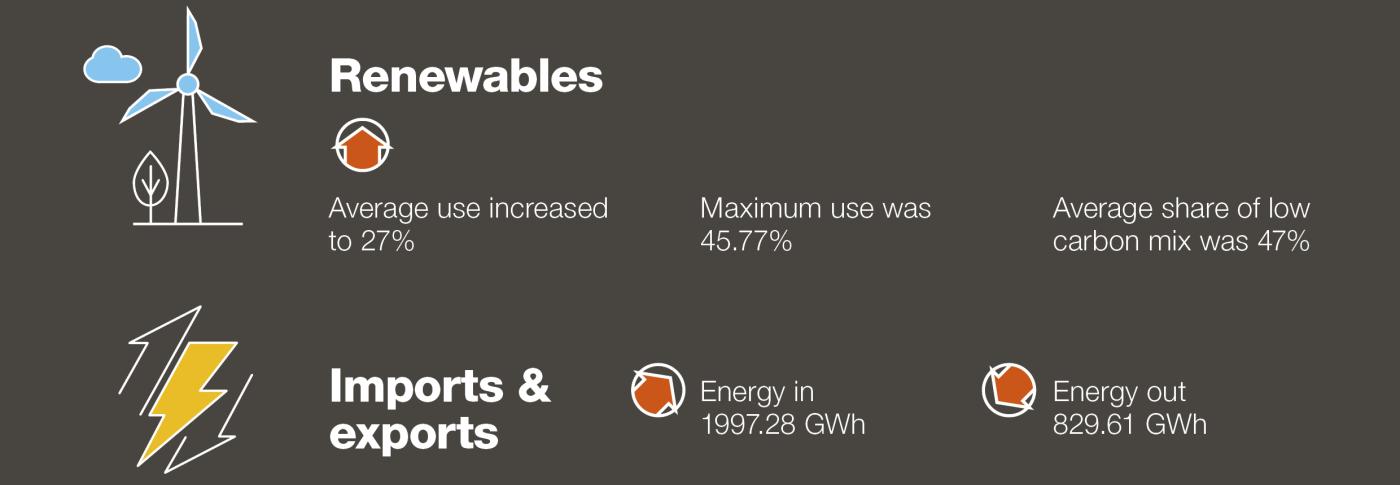
Wind blows in the new year making up almost 25% of Great Britain’s electricity
30 Jan 2020 - 2 minute read
- New report reveals the stats behind January’s electricity in Great Britain
- Wind power alone made up almost a quarter of electricity generation, with low carbon sources almost half
- Report highlights the role of National Grid ESO’s control room in managing the GB system
A new National Grid Electricity System Operator (ESO) report launched today reveals the facts and figures behind Great Britain’s demand for electricity in January.
Wind power alone made up almost a quarter of electricity generation, with low carbon sources generating almost half of Britain’s power.
The report highlights the role of the ESO’s control room in managing the GB system, with its engineers working around the clock to balance supply and demand. Their decisions also determine where Britain’s electricity comes from, always choosing the most efficient mix for consumers using the generation and network assets available.
National Grid ESO, a legally separate part of the wider National Grid group, oversaw a record breaking year for Britain’s electricity in 2019, with the highest levels of wind and solar generation ever recorded and the longest ever period of no coal being burned to generate electricity – 437 hours. GB electricity was also the ‘greenest’ it has ever been on August 17th last year, with the lowest ever carbon intensity and highest ever level of low carbon power
The National Grid ESO Carbon Intensity website and app, also shows the carbon intensity and generation mix of electricity consumed regionally across Great Britain, as well as showing users when electricity is at its cleanest, helping them to plan their energy use.
Commenting on January’s report, Roisin Quinn, Head of National Control at National Grid ESO, said:
“The engineers in our control room balance supply and demand for electricity in Great Britain minute by minute, so it’s great to be able to showcase their work in our new monthly Electricity Report.
In January they worked around the clock to manage 22 thousand gigawatt hours of electricity through Great Britain’s network, that’s enough to power over 4500 billion kettles or 23 billion washing machines all running at the same time!
My team also make the decisions that influence the mix of power too, using the generators and network assets available to deliver safe and reliable electricity, always choosing the cheapest mix for consumers.
Our new report shows that January is typical of the changing nature of GB electricity, with a reduced reliance on coal power stations (there are only 5 remaining in GB) and almost a quarter of electricity coming from wind power – trends we expect to continue as we move towards our ambition of being able to operate carbon free by 2025.”
